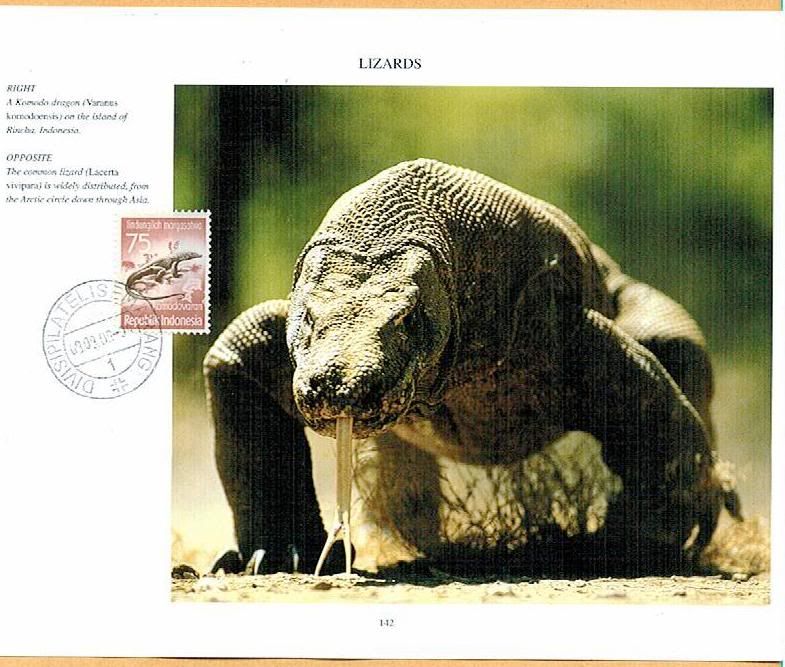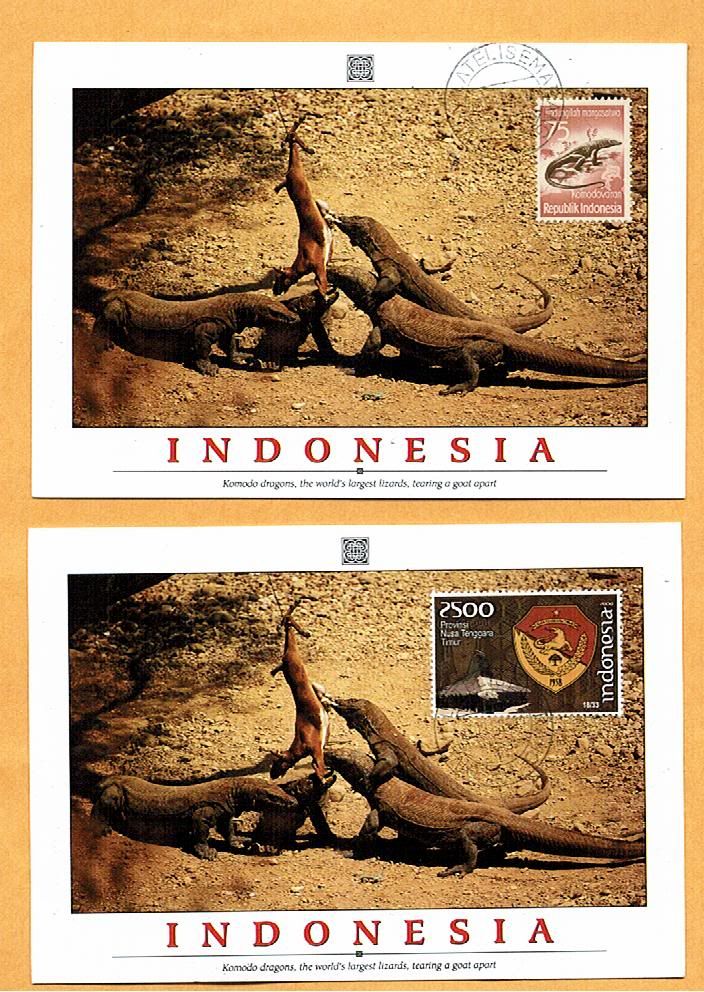This deer was provided by the Park rangers, for the dragons.
"The Komodo dragon (Varanus komodoensis) is a large species of lizard found in the Indonesian islands of Komodo, Rinca, Flores,Gili Motang and Gili Dasami.[3]
A member of the monitor lizard family (Varanidae), it is the largest living species of lizard, growing to a maximum of length 3 metres (9.8 ft) in rare cases and weighing up to around 70 kilograms (150 lb).[3]"
Youngsters, respect your elders! They think YOU are very good!
"Young Komodo dragons are vulnerable and therefore dwell in trees, safe from predators and cannibalistic adults. They take about eight to nine years to mature, and are estimated to live for up to 30 years.[3"
Never taunt a Dragon..."Bite me!"
Its mouth bacteria is virulent - toxic bite!
Newsflash: There will be blood!
"Its saliva is frequently blood-tinged, because its teeth are almost completely covered by gingival tissue that is naturally lacerated during feeding.[13]
"There's something rotten in" Indonesia...
Knock, knock!
"Komodo dragons have been observed knocking down large pigs and deer with their strong tail."
How to swallow [a whole goat, that is]: by ramming!
"Komodo dragons eat by tearing large chunks of flesh and swallowing them whole while holding the carcass down with their forelegs.
For smaller prey up to the size of a goat, their loosely articulated jaws, flexible skull, and expandable stomach allow it to swallow its prey whole.
The vegetable contents of the stomach and intestines are typically avoided.[22]
Copious amounts of red saliva that the Komodo dragons produce help to lubricate the food, but swallowing is still a long process (15–20 minutes to swallow a goat).
A Komodo dragon may attempt to speed up the process by ramming the carcass against a tree to force it down its throat, sometimes ramming so forcefully that the tree is knocked down.[22]
To prevent itself from suffocating while swallowing, it breathes using a small tube under the tongue that connects to the lungs.[13]
After eating up to 80 percent of its body weight in one meal,[7] it drags itself to a sunny location to speed digestion, as the food could rot and poison the dragon if left undigested for too long."
Riddle # 1:
A woman has one, maybe two...
No Komodo Dragon has one.
What is it?
.
.
.
.Diaphragm.
"Because the Komodo dragon does not have a diaphragm, it cannot suck water when drinking, nor can it lap water with its tongue. Instead, it drinks by taking a mouthful of water, lifting its head, and letting the water run down its throat."
Riddle # 2:
A man has one.
Every male Komodo Dragon has two.
What is it?
.
.
.
Penis.
"Females are antagonistic and resist with their claws and teeth during the early phases of courtship.
Therefore, the male must fully restrain the female during coitus to avoid being hurt.
Other courtship displays include males rubbing their chins on the female, hard scratches to the back, and licking.[37]
Komodo dragons may be monogamous and form "pair bonds", a rare behavior for lizards."
"A hemipenis (plural hemipenes) is one of a pair of intromittent organs of male squamates (snakes, lizards and worm lizards)."
Parthenogenesis, or "Who needs a male?
I can do bad kids by myself!"
A good man is hard to find.
Or, as actress Mae West said: [the other way around].
"A Komodo dragon at London Zoo named Sungai laid a clutch of eggs in late 2005 after being separated from male company for more than two years.
Scientists initially assumed that she had been able to store sperm from her earlier encounter with a male, an adaptation known as superfecundation."
DID YOU KNOW?
"Heteropaternal superfecundation is common in animals such as cats and dogs. Stray dogs often produce litters in which every puppy has a different father.
Though rare in humans, many cases have been documented."
"It has been hypothesized that this reproductive adaptation allows a single female to enter an isolated ecological niche (such as an island) and by parthenogenesis produce male offspring, thereby establishing a sexually reproducing population (via reproduction with her offspring that can result in both male and female young).[44] Despite the advantages of such an adaptation, zoos are cautioned that parthenogenesis may be detrimental to genetic diversity."
Not good for Petting Zoo, as Phil Bronstein found out, during his Stone Age.
"Even seemingly docile dragons may become aggressive unpredictably, especially when the animal's territory is invaded by someone unfamiliar.
In June 2001, a Komodo dragon seriously injured Phil Bronstein—executive editor of the San Francisco Chronicle—when he entered its enclosure at the Los Angeles Zoo after being invited in by its keeper.
Bronstein was bitten on his bare foot, as the keeper had told him to take off his white shoes, which could have potentially excited the Komodo dragon.[62][63]
Although he escaped, he needed to have several tendons in his foot reattached surgically.[64]"
================
Pink background of the Komodo Dragon stamp at the top, remember?
Happy Pink Saturday! (still open on Sunday!)
Please visit "Pretty in pink"/ "Show us your pink" [objects, that is :)] meme here:





